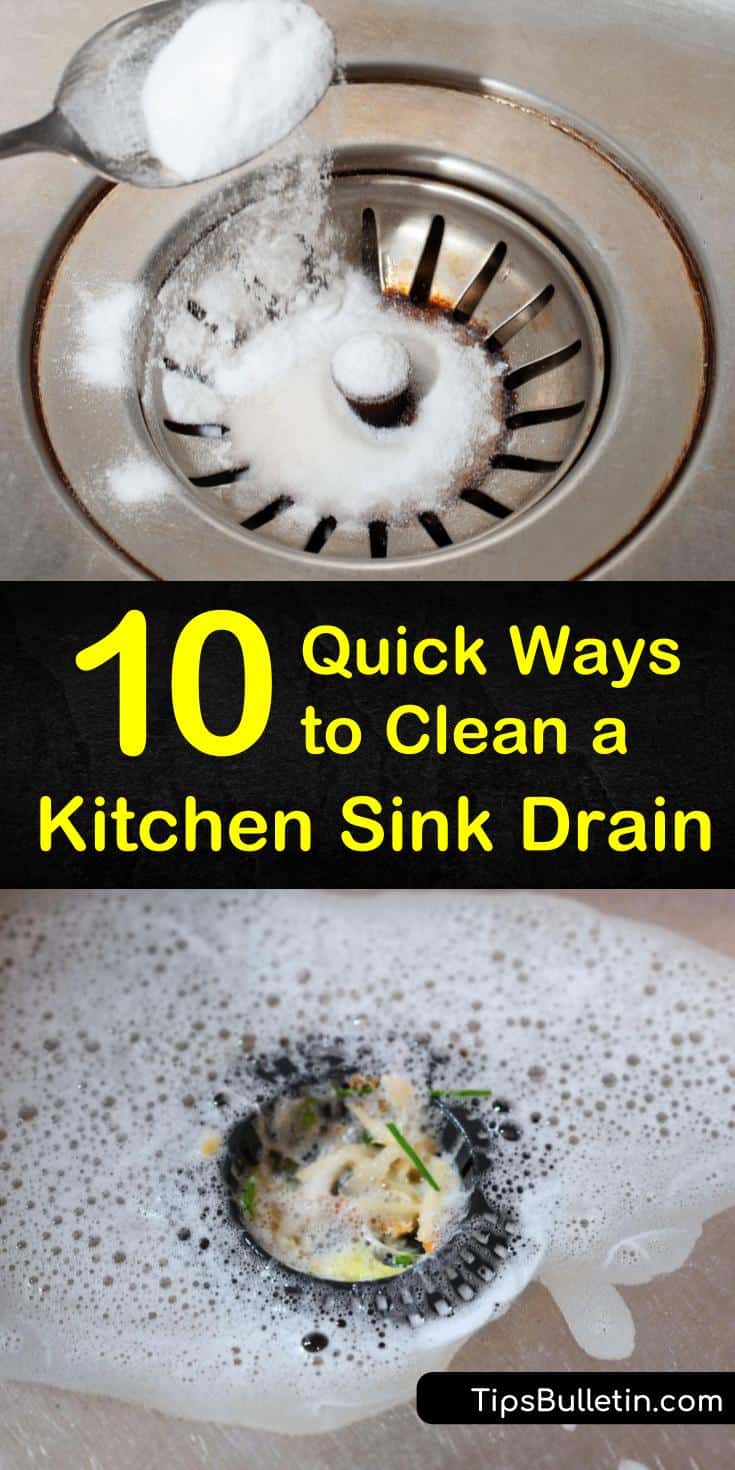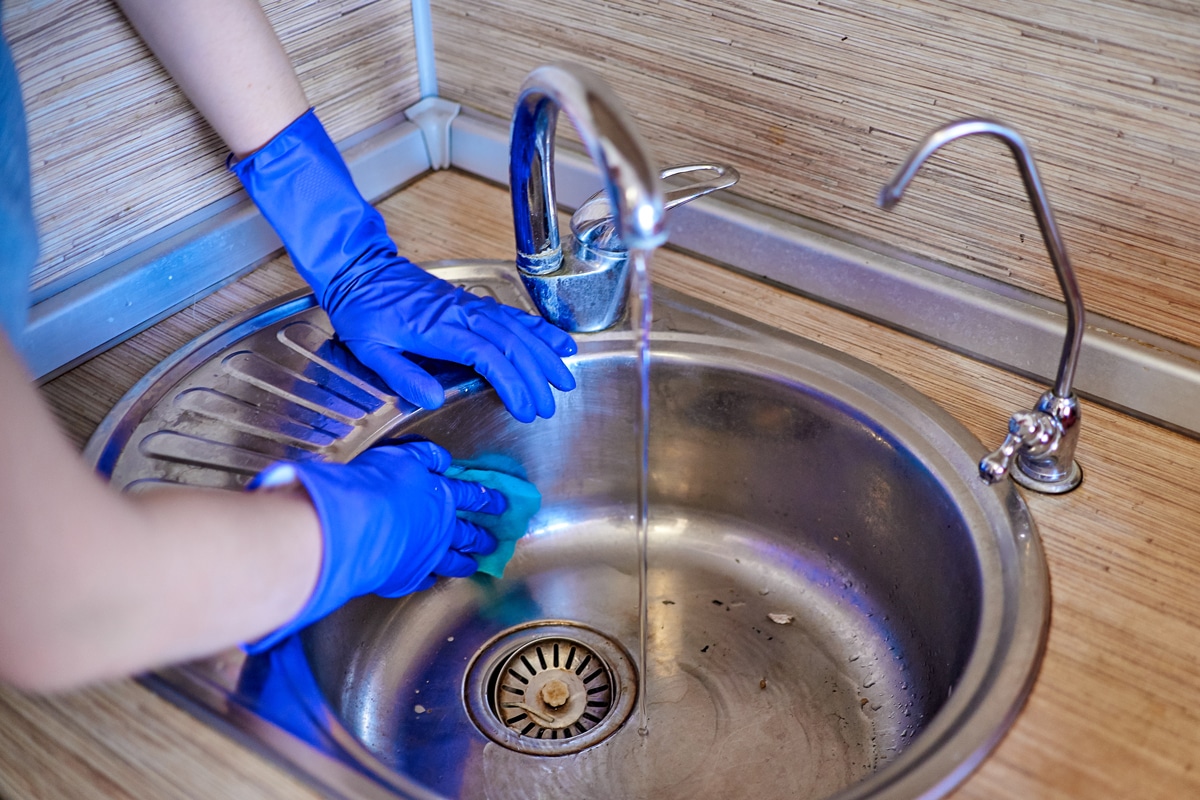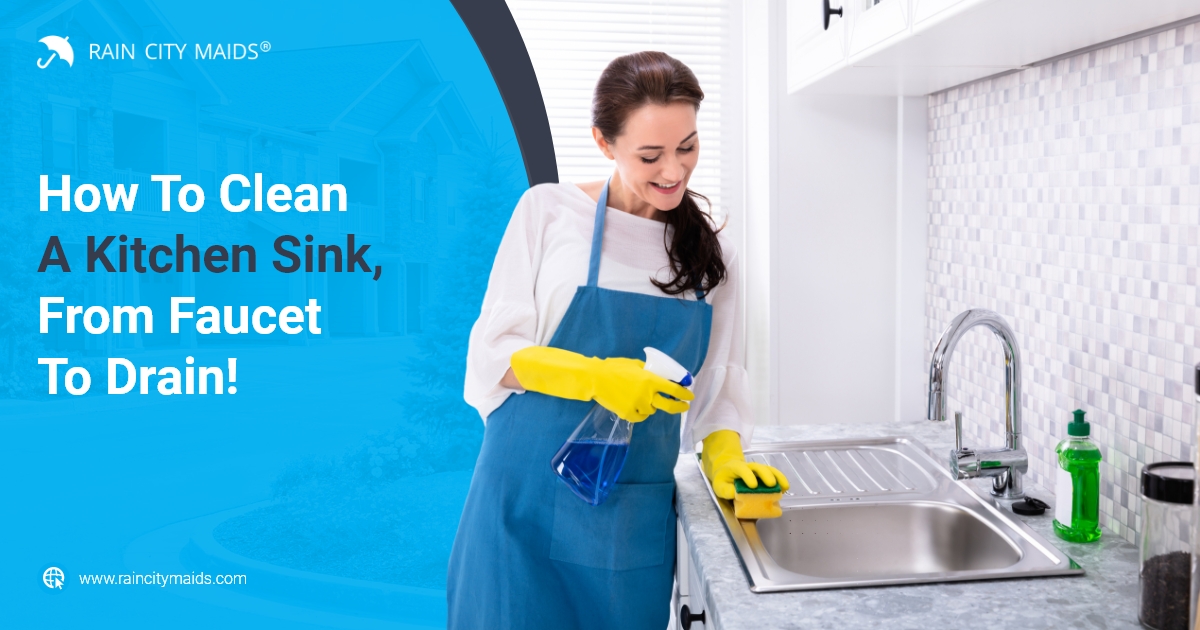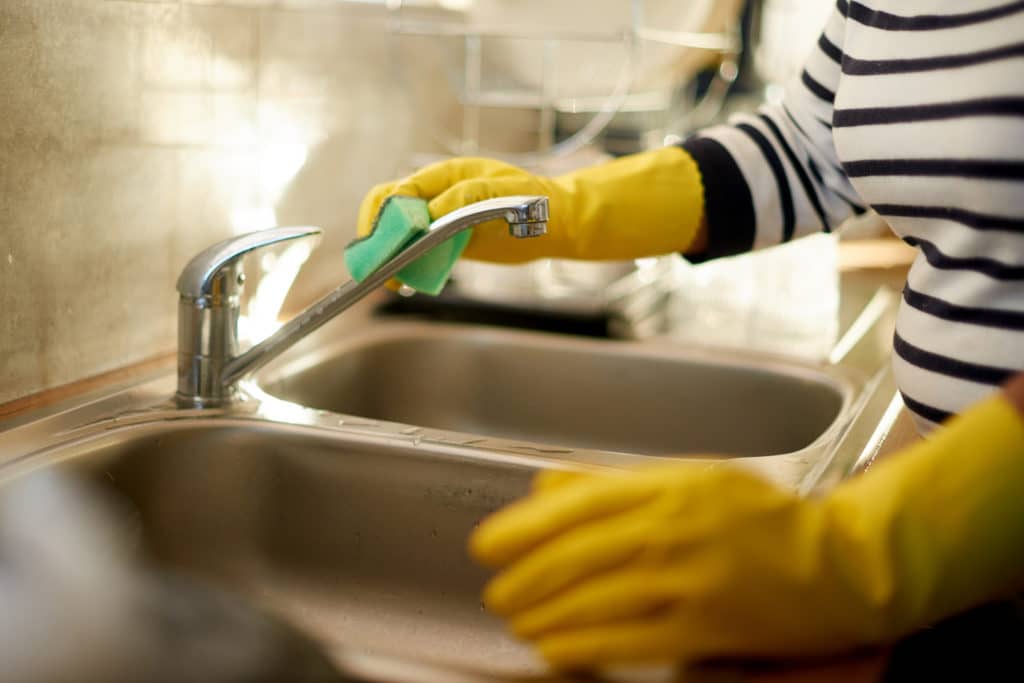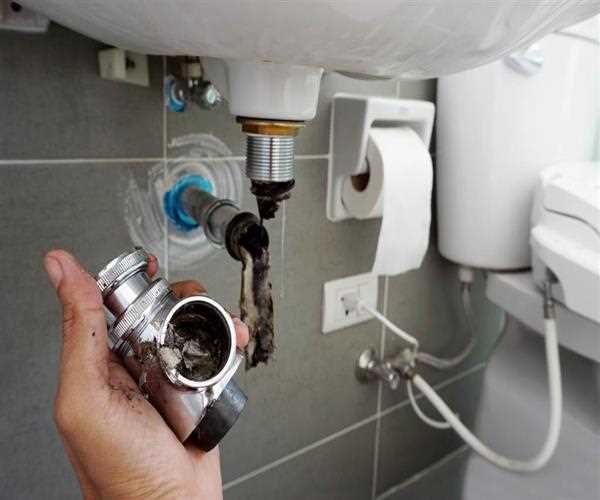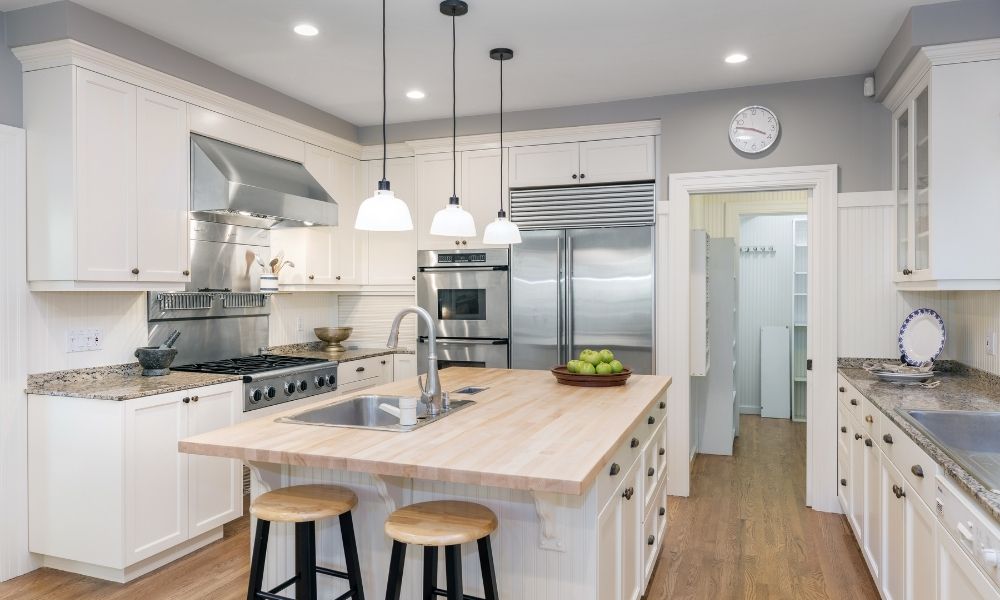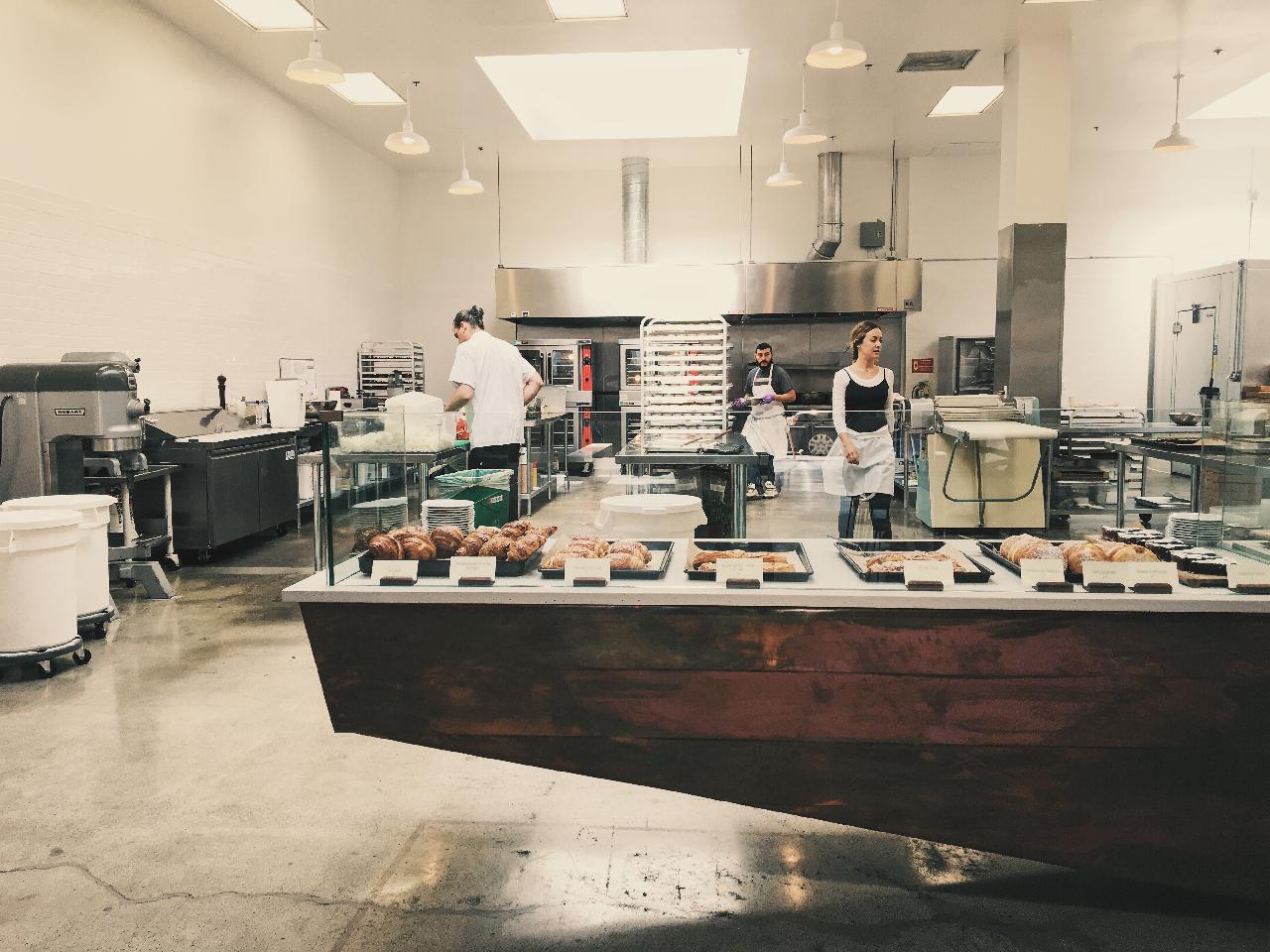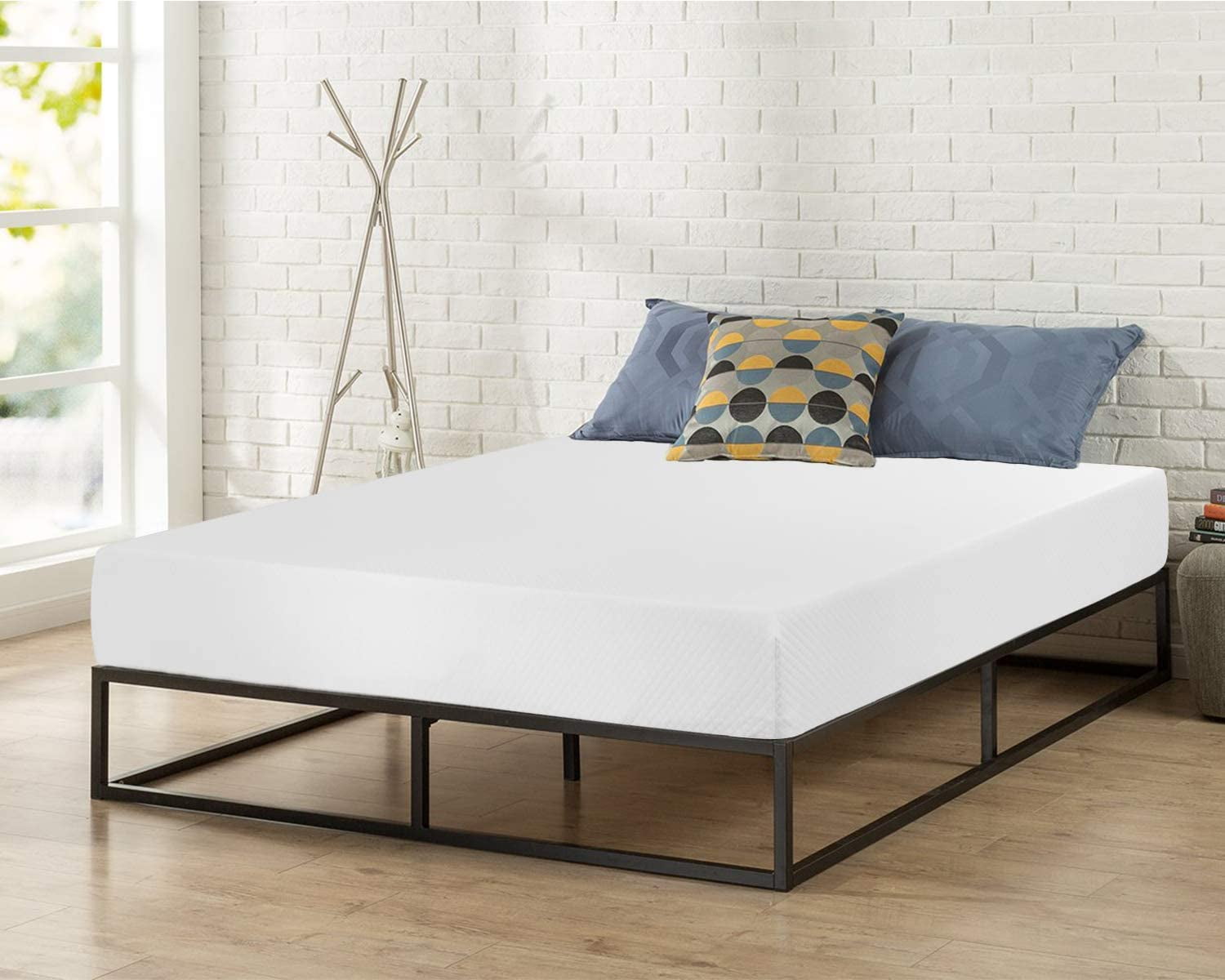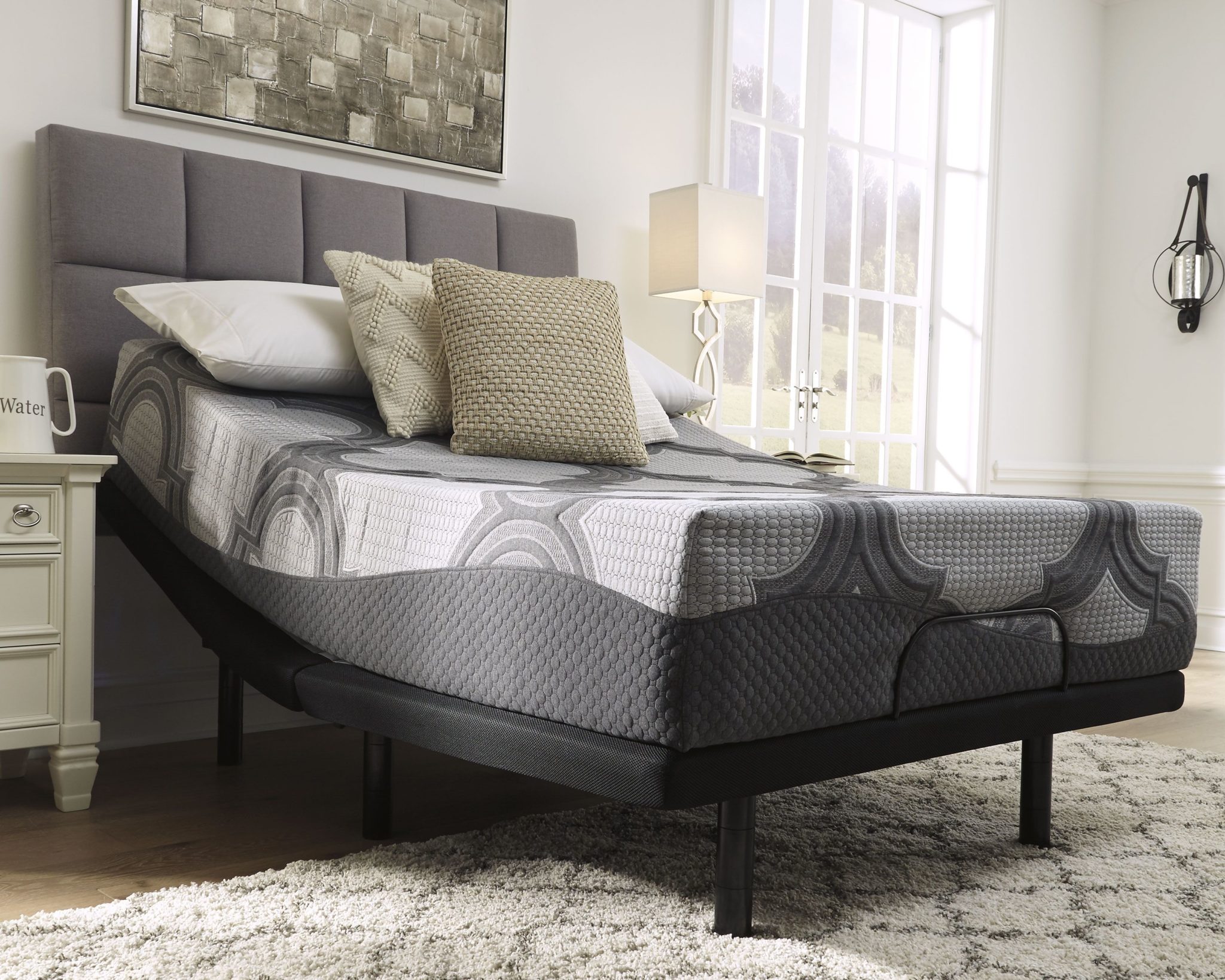If you've ever looked under your kitchen sink, you may have noticed a small, cylindrical tube extending down from the faucet. This is known as a kitchen sink water stub, also referred to as a water supply stub-out or water supply line. But what exactly is its purpose and how does it work? Kitchen sink water stubs are an essential part of your plumbing system. They serve as a connection point between your faucet and the main water supply line, allowing water to flow into your sink. Without water stubs, you wouldn't be able to have a functioning kitchen sink. The water stubs are typically made of copper or plastic and are attached to the bottom of your faucet with a nut and washer. They extend down into the cabinet below your sink and connect to the hot and cold water supply lines. When you turn on your faucet, the water travels through these lines and into the stubs, eventually coming out of the spout.1. Kitchen Sink Water Stubs: What Are They and How Do They Work?
Installing kitchen sink water stubs may seem like a daunting task, but it's actually a fairly simple process. If you're comfortable with basic plumbing work, you can install water stubs yourself. Here's a step-by-step guide: Step 1: Turn off the water supply to your kitchen sink. This can usually be done by turning a valve under the sink in a clockwise direction. Step 2: Disconnect the old water supply lines from the faucet. This may require a wrench or pliers. Step 3: Install the new water stubs onto the bottom of your faucet by securing them with a nut and washer. Step 4: Connect the other end of the water stubs to the hot and cold water supply lines. Make sure they are securely attached. Step 5: Turn the water supply back on and test your new water stubs by turning on the faucet. If there are any leaks, tighten the connections.2. How to Install Kitchen Sink Water Stubs
Like any other plumbing component, kitchen sink water stubs can experience issues. Here are some common problems you may encounter and how to fix them: Leaking: If you notice water leaking from the connections between the water stubs and the faucet or supply lines, it's likely that the connections are loose. Tighten them with a wrench or pliers. No water flow: If no water is coming out of your faucet, the water supply may be turned off. Check to make sure the valve under the sink is open. If it is, the water stubs may be clogged. Try cleaning them out with a vinegar solution. Low water pressure: If the water pressure from your faucet is low, it could be due to a clogged aerator. Remove the aerator from the faucet, clean it, and reattach it. Strange noises: If you hear a loud banging or knocking noise when you turn on your faucet, it could be due to water hammer. This can be fixed by installing a water hammer arrestor.3. Common Problems with Kitchen Sink Water Stubs and How to Fix Them
There are several benefits to using kitchen sink water stubs in your home: Convenience: Water stubs make it easy to access water in your kitchen sink. They allow for a quick and efficient flow of water, making everyday tasks like washing dishes and cooking much more convenient. Flexibility: Water stubs come in various sizes and types, allowing you to choose the best option for your specific needs. This flexibility also makes it easier to install or replace them if needed. Cost-effective: Water stubs are a cost-effective plumbing solution, making them a popular choice for many homeowners. They are relatively inexpensive and easy to install, making them a convenient and budget-friendly option. Prevents water damage: By connecting your faucet directly to the main water supply line, water stubs help prevent potential leaks or bursts in the plumbing system. This can save you from costly water damage repairs in the future.4. The Benefits of Using Kitchen Sink Water Stubs
There are several types of kitchen sink water stubs, each with its own unique features and uses: Copper stubs: These are the most common type of water stubs. They are durable and resistant to corrosion, making them a popular choice among homeowners. Plastic stubs: While not as durable as copper, plastic stubs are more affordable and easier to install. They are also less prone to corrosion. Flexible stubs: As the name suggests, these stubs are flexible and can be easily bent to fit different angles. They are a great option for tight or awkward spaces under the sink. Stainless steel stubs: These stubs are extremely durable and resistant to corrosion. They are also more expensive than copper or plastic stubs.5. Different Types of Kitchen Sink Water Stubs and Their Uses
To ensure your kitchen sink water stubs continue to function properly, it's important to regularly clean and maintain them. Here are some tips to help you keep them in top condition: Inspect for leaks: Regularly check the connections between the water stubs and the faucet or supply lines for any leaks. If you notice any, tighten the connections to prevent further issues. Remove debris: Over time, debris and mineral deposits can build up in the water stubs, causing clogs. Use a vinegar solution to clean them out and keep the water flowing smoothly. Replace when necessary: If you notice any damage or wear and tear on your water stubs, it's important to replace them as soon as possible. This will prevent any potential leaks or bursts in the future.6. How to Maintain and Clean Kitchen Sink Water Stubs
With so many options available, it can be overwhelming to choose the right kitchen sink water stubs for your home. Here are a few tips to help you make the best decision: Consider the material: As mentioned before, water stubs are commonly made of copper, plastic, or stainless steel. Consider the pros and cons of each material and choose the one that best fits your needs and budget. Size and length: Make sure to choose water stubs that are the correct size and length for your specific sink and plumbing setup. Measure carefully before purchasing to avoid any installation issues. Consult a professional: If you're unsure about which water stubs to choose or how to install them, it's always best to consult a professional plumber. They can provide expert advice and ensure the job is done correctly.7. Tips for Choosing the Right Kitchen Sink Water Stubs for Your Home
While kitchen sink water stubs may seem like a simple plumbing component, there is actually a complex system of pipes and connections that make them work. It's important to have a basic understanding of this plumbing setup to properly maintain and troubleshoot any issues that may arise. The water supply line brings water into your home and connects to the main water line. The water stubs are connected to the hot and cold water supply lines and extend up to the faucet. When you turn on the faucet, water flows through the stubs and into the faucet, allowing you to access water for various tasks.8. Understanding the Plumbing Behind Kitchen Sink Water Stubs
Even with proper maintenance, you may encounter some issues with your kitchen sink water stubs. Here are a few common problems and how to troubleshoot them: Low water pressure: This can be caused by a clogged aerator or a faulty water stub. Clean the aerator or replace the water stub if necessary. Leaking: Check the connections between the water stubs and the faucet or supply lines for any loose connections. If the issue persists, the water stub may need to be replaced. No water flow: If no water is coming out of your faucet, the water supply may be turned off. If the supply is on, check for any clogs in the water stubs or faucet.9. Troubleshooting Common Issues with Kitchen Sink Water Stubs
If you're looking to upgrade your kitchen sink water stubs, there are a few things to keep in mind: Material: Consider the material of your current water stubs and whether you want to stick with the same material or upgrade to a different one. Compatibility: Make sure the new water stubs are compatible with your current plumbing setup and will fit properly under your sink. Professional installation: It's always best to have a professional plumber install new water stubs to ensure they are installed correctly and safely. In conclusion, kitchen sink water stubs are a crucial component of your plumbing system that allows you to access water in your kitchen sink. By understanding how they work, properly maintaining them, and knowing how to troubleshoot common issues, you can ensure your water stubs continue to function properly for years to come. If you're in need of new water stubs or are experiencing issues with your current ones, consult a professional plumber for expert advice and assistance.10. Upgrading Your Kitchen Sink Water Stubs: What You Need to Know
The Importance of Kitchen Sink Water Stubs in House Design

Efficient Water Management
 When it comes to designing a house, every detail matters. From the layout to the materials used, each component contributes to the overall functionality and aesthetics of the home. This includes the
kitchen sink water stubs
, which may seem like a small and insignificant aspect of house design, but in reality, plays a crucial role in efficient water management.
Kitchen sink water stubs are the pipes that connect the sink to the main water supply. They are responsible for delivering clean, fresh water to the sink for various household tasks such as cooking, cleaning, and washing. Without them, we would have to manually fetch water from a distant source, which is not only inconvenient but also wasteful.
When it comes to designing a house, every detail matters. From the layout to the materials used, each component contributes to the overall functionality and aesthetics of the home. This includes the
kitchen sink water stubs
, which may seem like a small and insignificant aspect of house design, but in reality, plays a crucial role in efficient water management.
Kitchen sink water stubs are the pipes that connect the sink to the main water supply. They are responsible for delivering clean, fresh water to the sink for various household tasks such as cooking, cleaning, and washing. Without them, we would have to manually fetch water from a distant source, which is not only inconvenient but also wasteful.
Preventing Water Leakage
 One of the main functions of kitchen sink water stubs is to prevent water leakage. These pipes are designed to withstand high water pressure and are made from durable materials such as copper or PVC. This ensures that there are no leaks or cracks that could potentially waste water and cause damage to the house. By having properly installed and maintained
kitchen sink water stubs
, homeowners can avoid costly repairs and water bills.
One of the main functions of kitchen sink water stubs is to prevent water leakage. These pipes are designed to withstand high water pressure and are made from durable materials such as copper or PVC. This ensures that there are no leaks or cracks that could potentially waste water and cause damage to the house. By having properly installed and maintained
kitchen sink water stubs
, homeowners can avoid costly repairs and water bills.
Easy Access for Maintenance
 Another benefit of having kitchen sink water stubs is that they provide easy access for maintenance. Over time, pipes can become clogged with debris or develop wear and tear, which can affect their functionality. With water stubs, plumbers can easily access and replace damaged pipes without having to tear down walls or disrupt the entire plumbing system. This not only saves time and money but also minimizes any inconvenience to the homeowners.
Another benefit of having kitchen sink water stubs is that they provide easy access for maintenance. Over time, pipes can become clogged with debris or develop wear and tear, which can affect their functionality. With water stubs, plumbers can easily access and replace damaged pipes without having to tear down walls or disrupt the entire plumbing system. This not only saves time and money but also minimizes any inconvenience to the homeowners.
Enhancing Aesthetics
 Apart from their practical purposes, kitchen sink water stubs can also enhance the aesthetics of a house. With the variety of materials and designs available, homeowners can choose water stubs that complement their kitchen design and add a touch of style to their home. This attention to detail can make a significant difference in the overall look and feel of a house.
In conclusion,
kitchen sink water stubs
may seem like a minor component in house design, but their importance cannot be underestimated. They play a vital role in efficient water management, prevent water leakage, provide easy access for maintenance, and can even enhance the aesthetics of a home. So, the next time you are designing a house, make sure to give proper attention to the kitchen sink water stubs to ensure a functional and beautiful home.
Apart from their practical purposes, kitchen sink water stubs can also enhance the aesthetics of a house. With the variety of materials and designs available, homeowners can choose water stubs that complement their kitchen design and add a touch of style to their home. This attention to detail can make a significant difference in the overall look and feel of a house.
In conclusion,
kitchen sink water stubs
may seem like a minor component in house design, but their importance cannot be underestimated. They play a vital role in efficient water management, prevent water leakage, provide easy access for maintenance, and can even enhance the aesthetics of a home. So, the next time you are designing a house, make sure to give proper attention to the kitchen sink water stubs to ensure a functional and beautiful home.

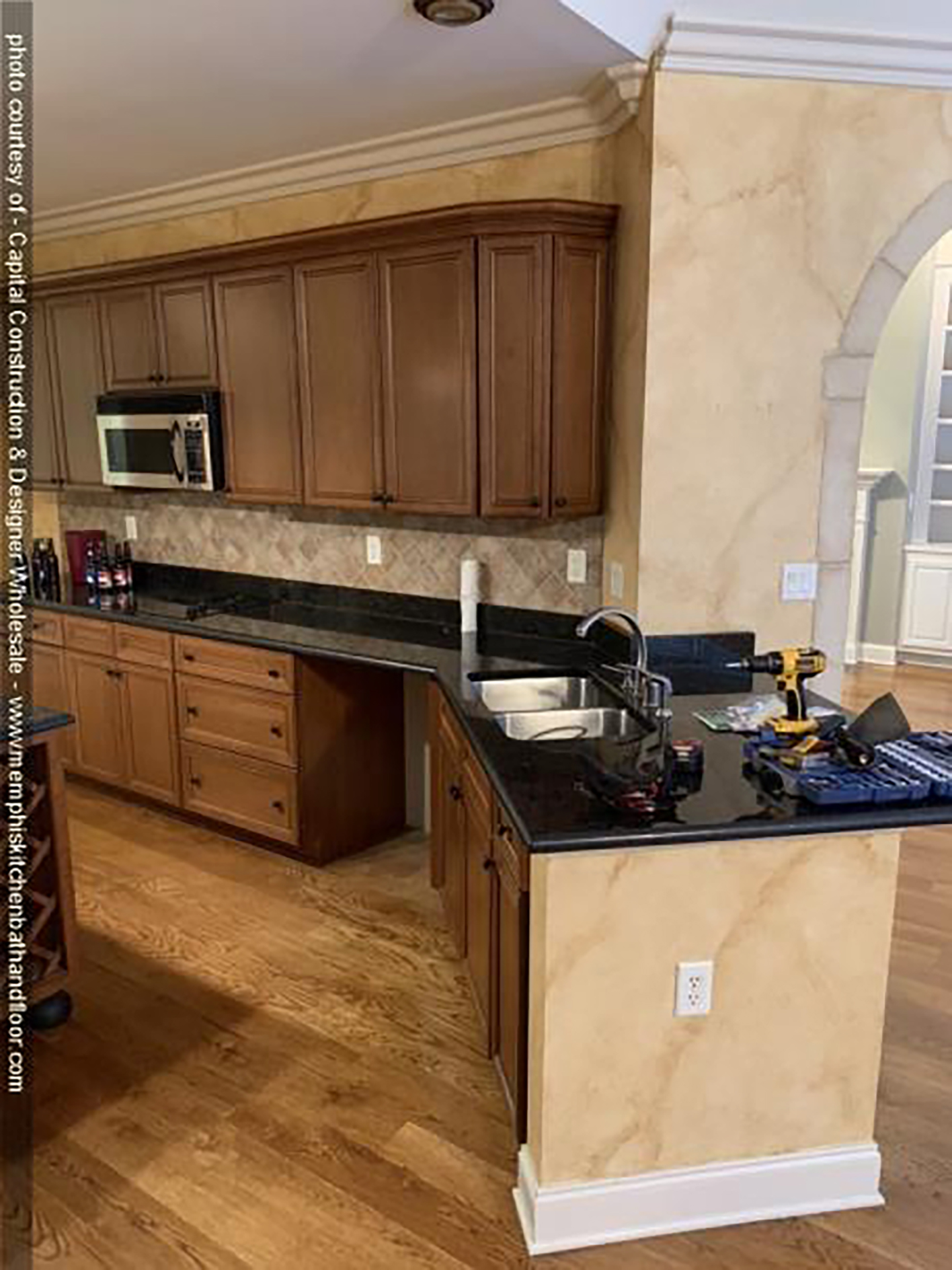





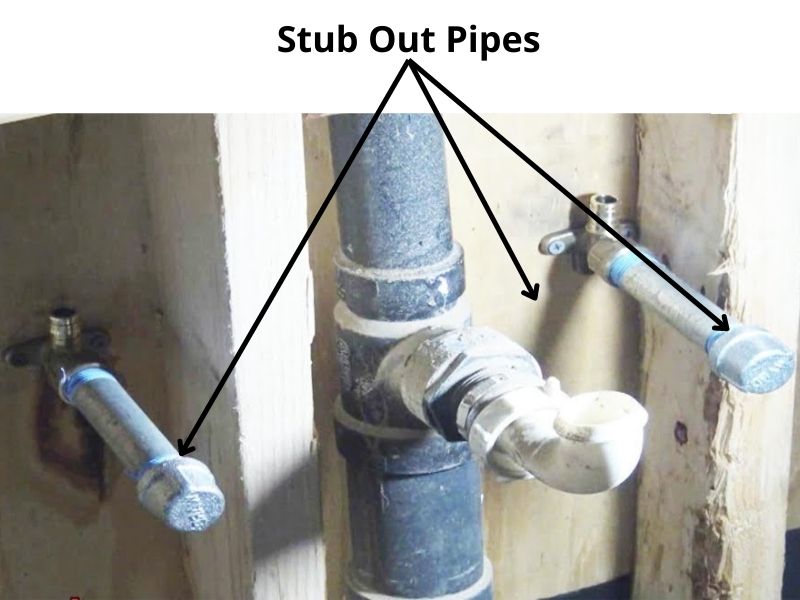




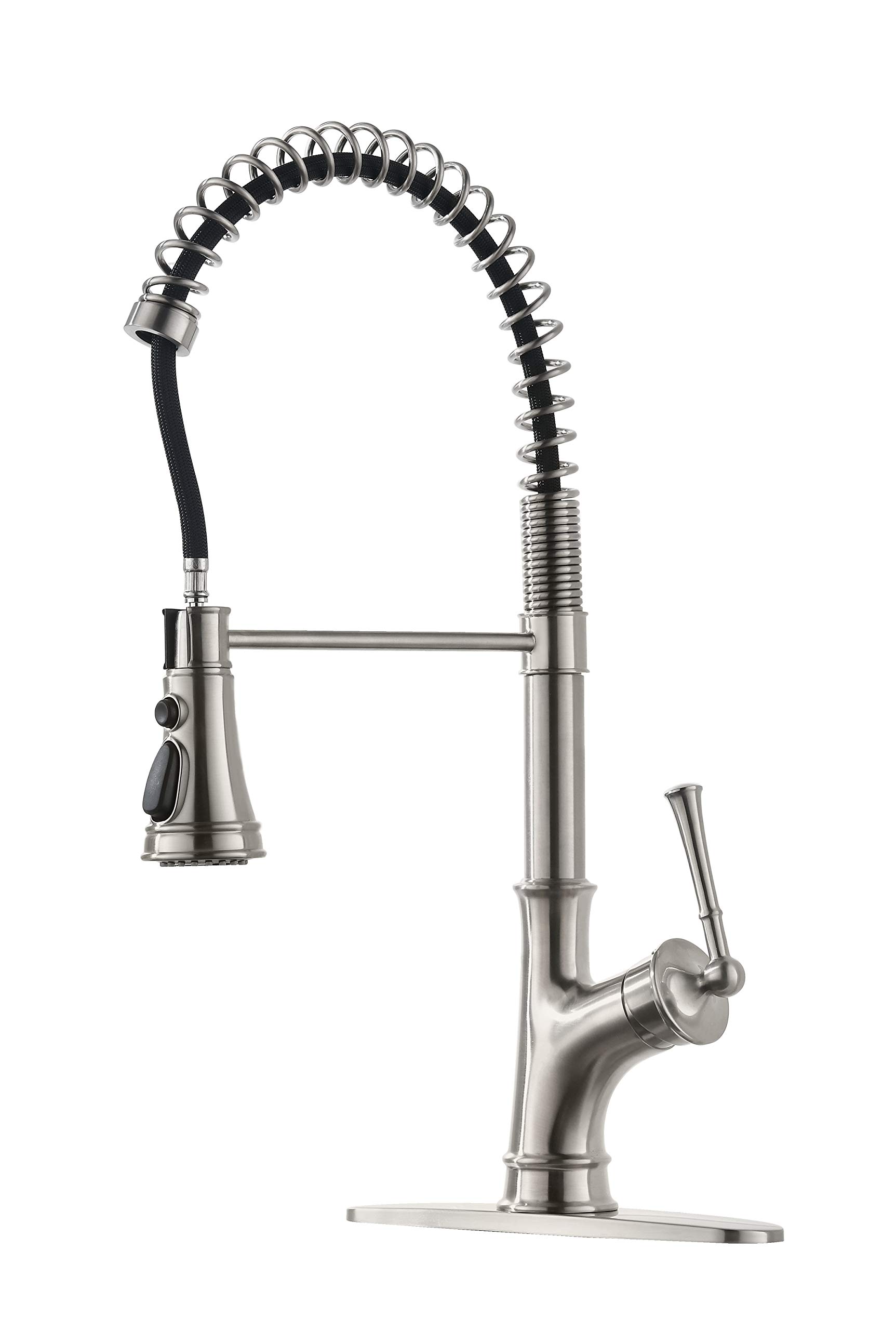


:max_bytes(150000):strip_icc()/how-to-install-a-sink-drain-2718789-hero-24e898006ed94c9593a2a268b57989a3.jpg)





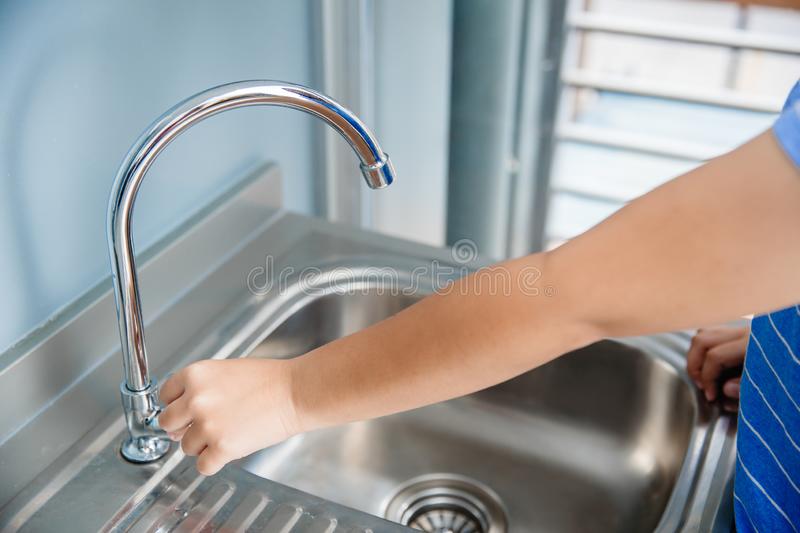

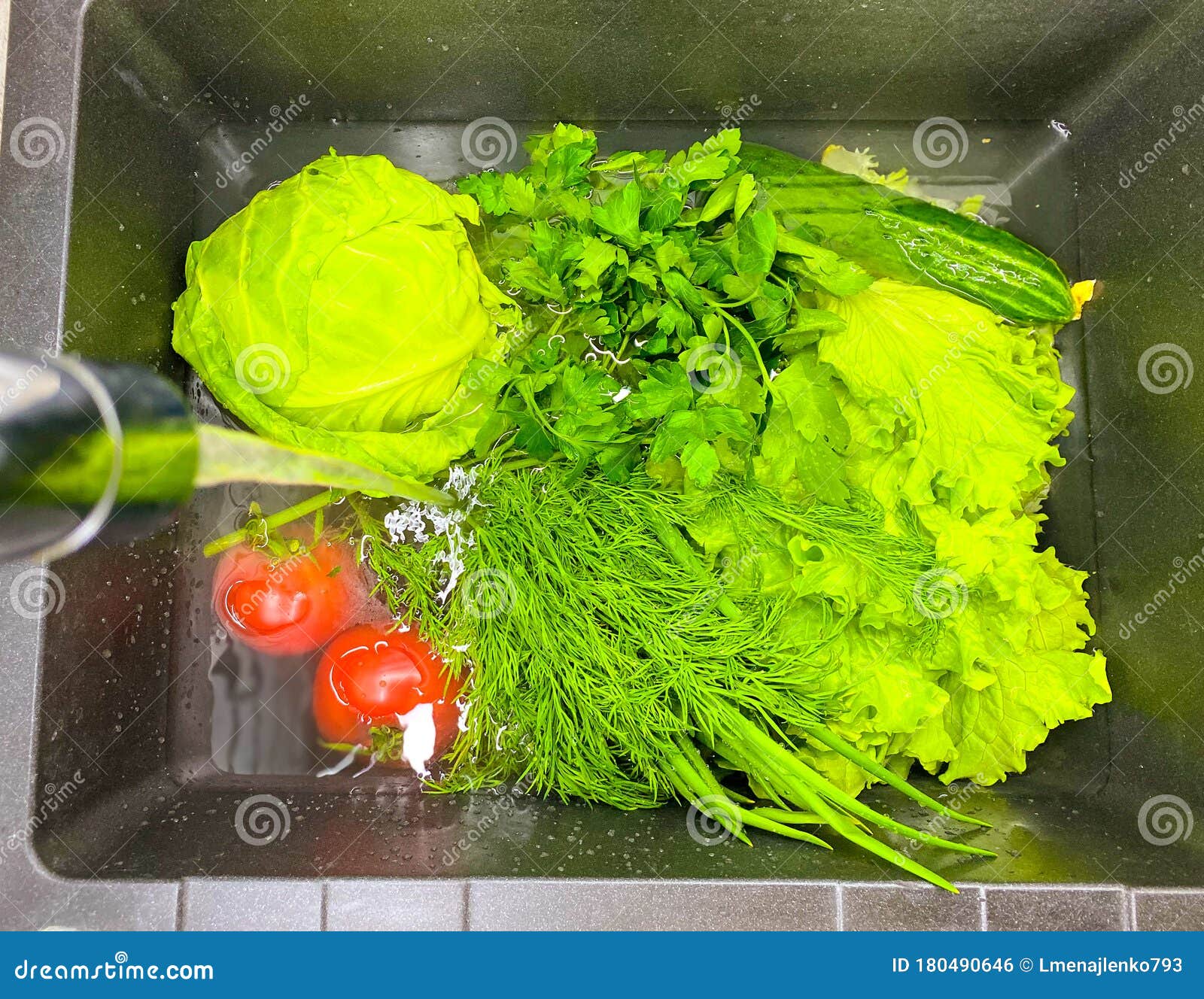






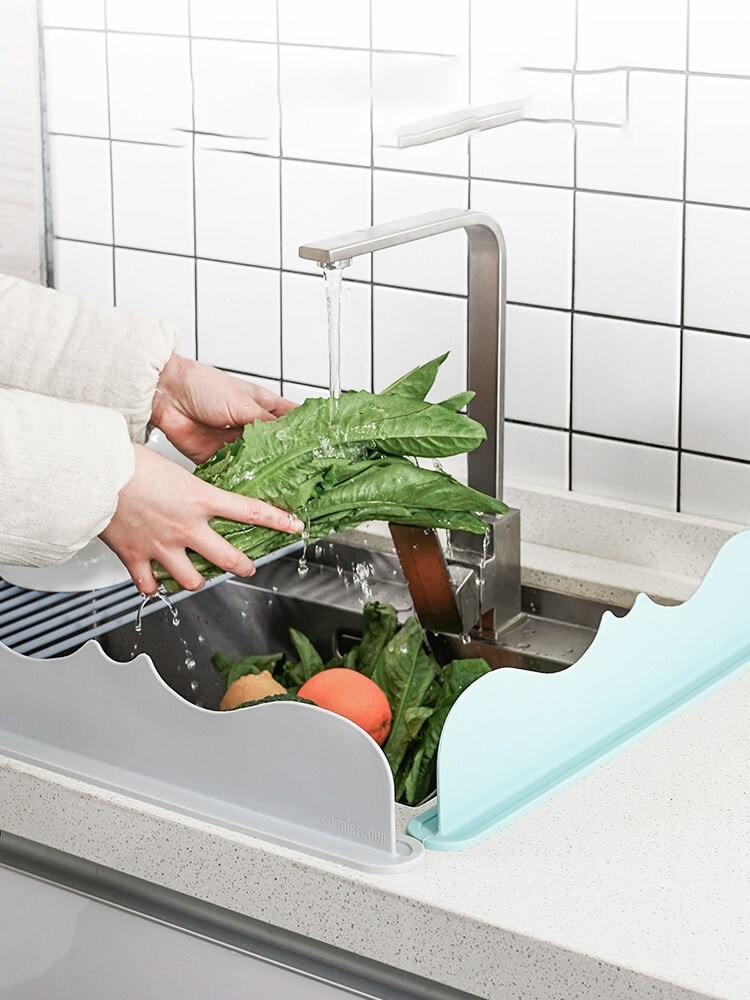

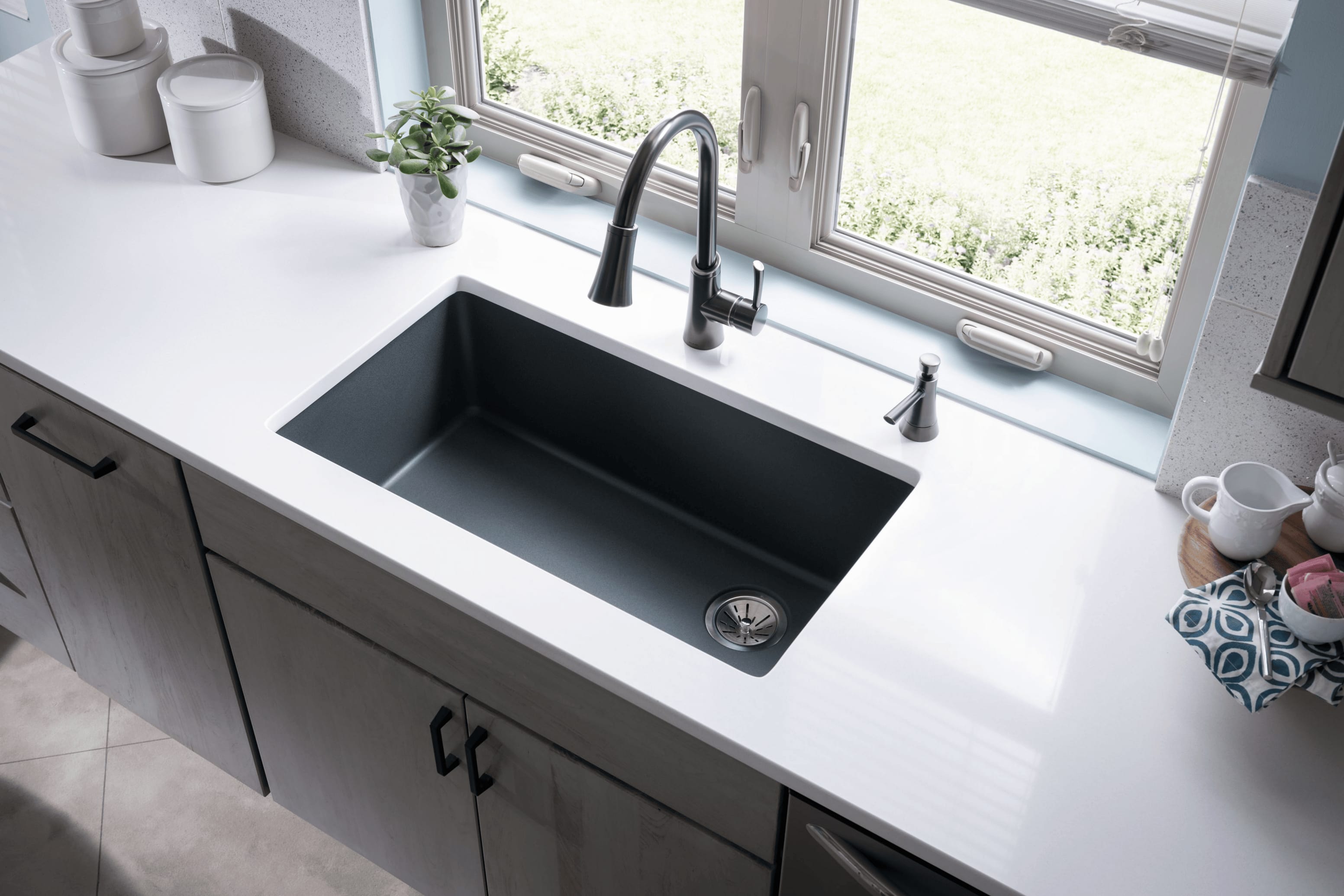


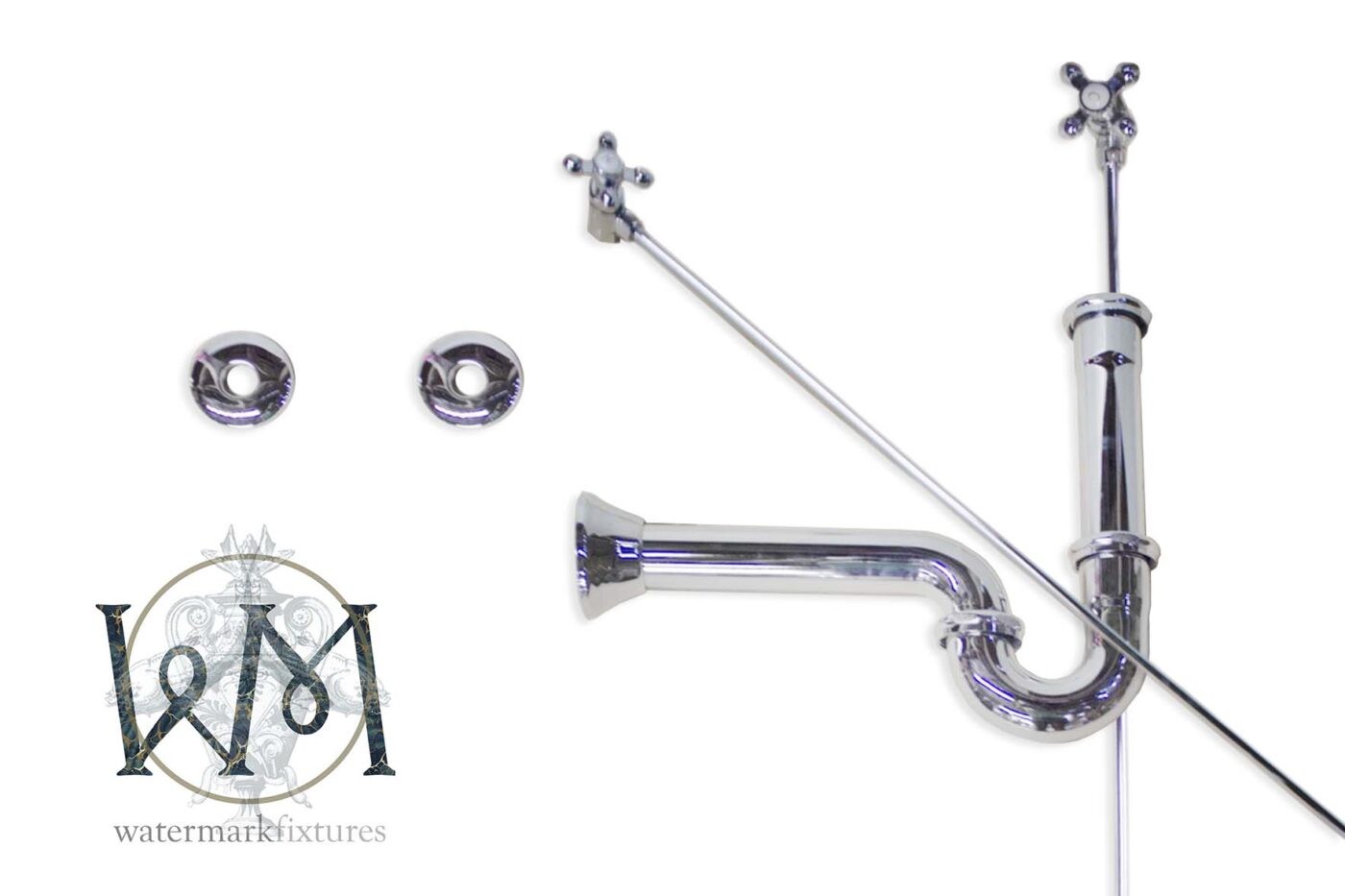




:max_bytes(150000):strip_icc()/Basic-kitchen-sink-types-1821207_color_rev-0b539306b9ef4236a136624ad2a89a4c.jpg)




